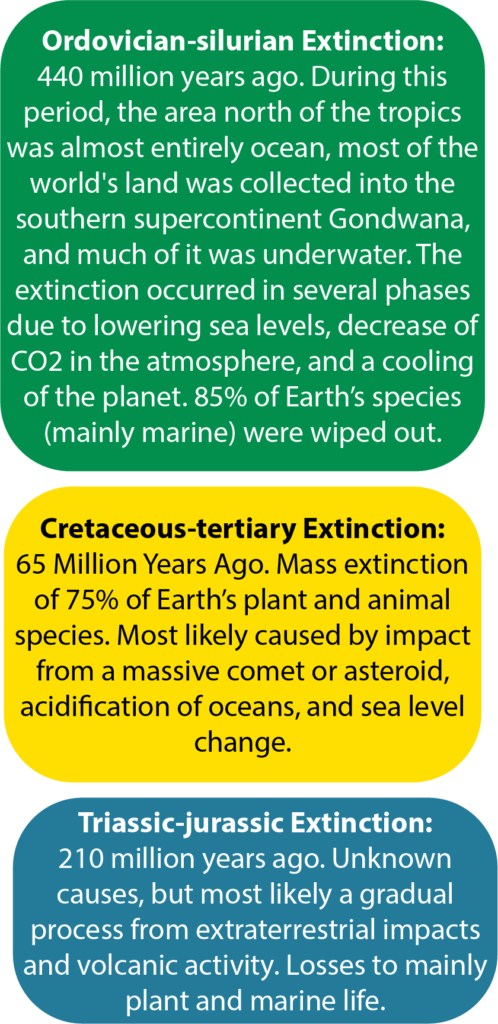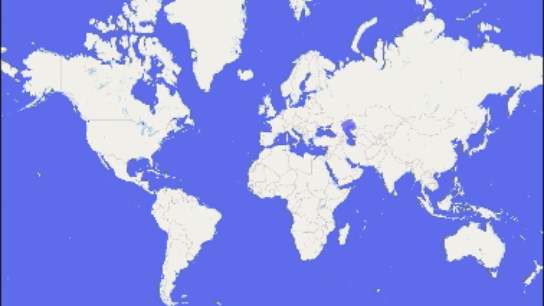
Last week we looked at some of the basic information that everyone should understand in order to transition to a sustainable lifestyle. This week we take a look at the worst case scenario for our planet of devastating effects of climate change if we do not curb our current rate of carbon emissions.
Visualizing our future in a changed climate can be a very impactful way to help us understand why we need to act now. And while no one can accurately predict the future, we do have a pretty good indication of the possible worst case scenarios.
The current worst case scenario for irreversible climate change is a situation that causes an extinction event where most or all of the current life on earth is wiped out, including humans. Keep in mind that extinction events can take thousands to millions of years. Even the extinction periods resulting from extraterrestrial impact took a long span of time to wipe out species. During that time, being unable to adapt to a changing environment implies an enormous amount of suffering as a species becomes extinct.

There have been many past extinction events. In the last 500 million years the “Big 5” have completely changed life on Earth: Ordovician-silurian, Devonian, Permian-triassic, Triassic-jurassic and the Cretaceous-tertiary Extinction events.

We are currently in the sixth mass extinction event, known as the Holocene Extinction, with extinction rates of species estimated between 100 to 1000 times higher than natural background rates. This event commenced over 100,000 years ago as we exited the last ice age. Several theories are proposed as to why the megafauna became extinct, including cold-adapted animals not coping with a warming climate, the unsustainable hunting practices of man, hyperdisease, rainfall fluctuations, and vegetation changes. Scientists have yet to form a consensus on the main cause, but we can be sure it was due to one or, more likely, a combination of these (and we should note there is a possibility, however unlikely, that none of these were the cause).
Some scientists are now considering ending the current geological epoch to accelerate the Anthropocene descriptor, the period during which human activity has been the dominant influence on climate and the environment, typically cited as beginning during the Industrial Revolution. History will tell future generations the accuracy, but if it is the case, there is potential for an Anthropocene Extinction event.
The Next 100 Years
On an Earth where we only limit global warming to 4.3 degrees celsius (7.74 degrees Farenheit) by 2100: None of our coral reefs have survived and the melting of polar sheets increased average sea levels by 3 feet. The air is now hot and heavy, clogged with particulate pollution, and summer temperatures exceed 60 degrees celsius (140 degrees Farenheit) for 20% of our population living in the hottest part of the world.
The Western states of the US are now uninhabitable, while Eastern cities are suffering severe infrastructure damage and extreme flooding. Water supplies are contaminated, salt water ingress into food crops, and diseases such as malaria, dengue, cholera, respiratory illnesses and malnutrition, are widespread. Global trade is non-existent. Wars are fought on borders to stop immigration and occupation. The climate has reached the point of no return.

Scientists no longer argue about solutions to human extinction, but rather how long will we have left.
The Next 1000 Years
Within the next millennia, our planet has lost over 90% of plants and animals, with those able to adapt suffering throughout their lives. There is a significant rise in the Earth’s methane and carbon dioxide levels. The average temperature will rise by more than 8 degrees celsius (14.4 degrees Farenheit). The average sea levels will rise by 30-50 feet.
Human beings are now extinct.
Next week we look at the more optimistic scenario of our planet’s brightest future.
Part VIII of our Climate Change Series that looks at climate history, consequences, policy and future outlook.




Pingback:Climate Science: What’s So Good About a Sustainable Future? – swrm